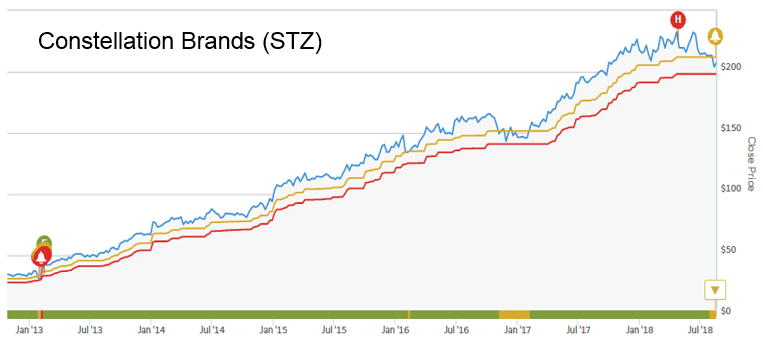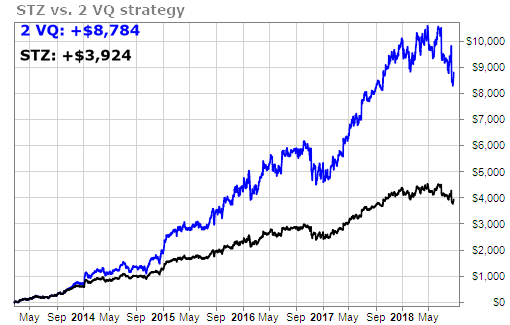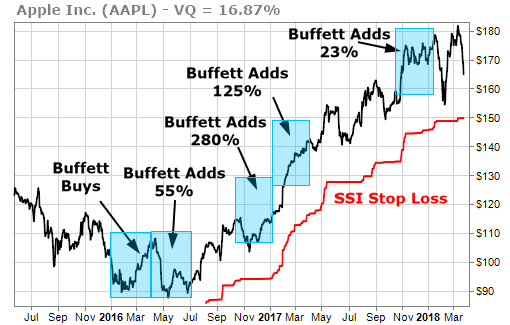The 2 VQ Approach Updated
Back in November 2016, TradeSmith wrote about investors who double up on their losers. He thought it made more sense to double up on your winners, which was an idea he wanted to explore for a long time.
He asked our research team to look at an approach that uses the Volatility Quotient (VQ) to determine when it made sense to double up on winning trades. “When is a good time to add to a winning position?” The answer we came up with is, “After two VQs.”
We looked at Constellation Brands (STZ), which was one of the best-performing stocks in the TradeStops universe. STZ last triggered a Stock State Indicator (SSI) Entry signal back in early February of 2013. At the time, STZ was trading for about $43 per share, and the VQ on STZ was 21%.
Today, more than five years later, STZ has moved up almost 400% in price and is trading above $207. The VQ has dropped down to 15.0%.
The 2 VQ approach works this way. We add to the position each time that STZ moves the equivalent of 2 VQ units higher. Once it reaches this point, we’d adjust to the new current VQ before we’d add to the position again.
In the case of STZ, when it first triggered the SSI Entry signal in 2013, the VQ was 21%. Therefore, the first 2 VQ trade would have occurred after STZ’s price moved higher by about 42%. What we mean by “after 2 VQs” is that we would look to add to our position in STZ once it had risen about 42% (that’s 2 x 21%) to $61.
Here’s an updated table of the 2 VQ trades through the last week of August 2018. There would have been five additional trades in STZ by using the 2 VQ methodology.
The last column shows you the VQ at the time of entering the trade. In 2015, the VQ of STZ dropped from a little over 20% to just under 17%. That’s why our 2 VQ entry was at the $116.94 level instead of the $123.07 level, which it would have been had we used the previous VQ.
Here are the backtested results of investing in STZ using the 2 VQ
approach …
We assumed that we invested $1,000 into STZ in the beginning and then invested an additional $1,000 when the 2 VQ levels were hit. As the stock has moved higher, the additional positions have added considerably to the profits.

There’s no special exit method for the 2 VQ approach. We’ll exit all of the positions when STZ hits its SSI Stop Loss and moves into the SSI Red Zone.
Want to know who else uses an “add to your winners” approach?
Warren Buffett.
According to his latest SEC 13(f) filings, the largest holding in Berkshire Hathaway (BRK.A) is Apple (AAPL).
Buffett didn’t buy AAPL all at once — he began buying the stock in early 2016 and has added to his position almost every quarter since then. At the Berkshire Hathaway shareholder meeting in Omaha in May, he said that he’d like to own even more shares of AAPL.
We’ll talk more about the 2 VQ strategy in our educational webinar on Wednesday, September 5, at 1 p.m. Eastern time. You’ll see a couple more charts on STZ, and we’ll also show you the results of using a 2 VQ approach for Nvidia (NVDA), which has also had a nice run for the past 2+ years.
Even if you can’t attend the live event due to a scheduling conflict, register anyway, because we record the presentation and send the recording link to everyone who registered. That way, you can view it at your convenience.
Cheers,
TradeSmith Education Team